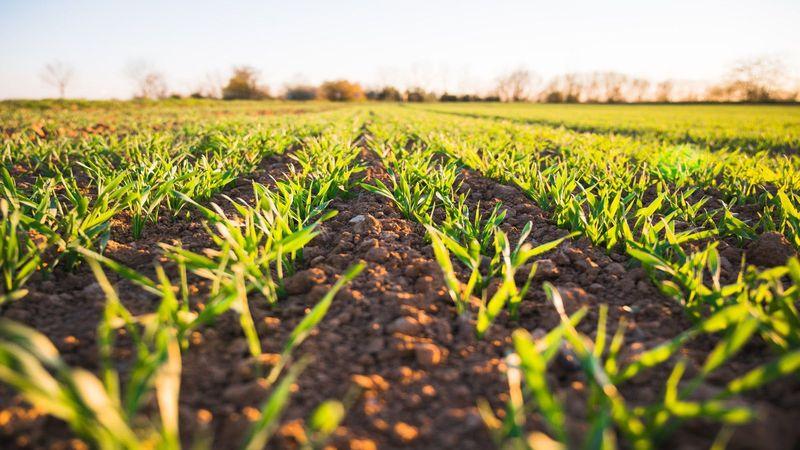
Photo by Jan Kopřiva on Unsplash
Researchers use ultra-small graphene particles to develop a new soil moisture sensor
Anyone who has tried their hand at growing plants, be it an amateur gardener or a seasoned farmer, would be familiar with the perils of under- or over-watering a sapling. Plants require the right amount of water for their healthy growth, and to figure out when and how much to water one has to know the existing moisture levels in the soil. When it comes to keeping track of the watering schedule for a large number of plants, such as for a field of crops, there is a need for an affordable, easy-to-use soil moisture sensor that can accurately measure the water content in the soil.
A recent study, published in the journal Carbon, demonstrates the workings of a soil moisture sensor made from graphene quantum dots, which are nanometer-sized fragments of graphene. The study was conducted by a team of researchers from the Indian Institute of Technology, Bombay (IIT Bombay), Gauhati University, and Dhirubhai Ambani Institute of Information and Communication Technology, Gandhinagar. It was funded by the Department of Science and Technology, the University Grants Commission and the Assam Science Technology and Environmental Council.
Graphene is made up of a sheet of carbon atoms arranged in a honeycomb-like pattern. Over the years, studies have explored the use of graphene quantum dots — disc-shaped materials made of a few layers of graphene, measuring mere nanometers — for a variety of sensing applications. While extensive research is being carried out on the synthesis of graphene quantum dots, the challenge remains in designing a method that results in a good yield of uniformly-sized particles. Additionally, the process must be scalable and easily adaptable for its commercialisation.
“Our motivations behind this study was to devise a simple, inexpensive and scalable approach for synthesising graphene quantum dots, and to develop an affordable soil moisture sensor that is suitable for large scale use,” says Prof Hemen Kalita, who is the lead author of this study. He is an Assistant Professor at the Gauhati University and previously was a doctoral student with Prof M Aslam at IIT Bombay.
The researchers have proposed a method to produce graphene quantum dots as small as 3–5 nanometre from easily available and low-cost graphene oxide. They coated a thin film of graphene oxide onto a carbon electrode and placed it inside an electrolyte solution. When an electric current is applied to the setup, the carbon bonds in the graphene oxide get cleaved, and molecules of the electrolyte occupy those gaps in the graphene oxide layer. Eventually, they form quantum dots of graphene having oxygen-containing chemical groups.
“At a laboratory scale, we were successful in synthesising graphene quantum dots through our novel approach, and we have filed a patent for the synthesis method,” says Prof Kalita.
Using the graphene quantum dots, the researchers fabricated a soil moisture sensor which is smaller in size than a lentil seed. The moisture content value displayed by the sensor depends on the resistance measured across it, and with an increasing percentage of water content, there is a fall in resistance. When the sensor is inserted into moist soil, the oxygen atoms present in the graphene quantum dots interact with the hydrogen atoms of the water and form a layer of water molecules on the surface of the sensor. When an external voltage is applied to the sensor via a source meter, the loosely held water molecules in the upper layers get ionised and conduct electrical charge. This leads to a decrease in resistance of the sensor.
The researchers tested the soil moisture sensors on samples of black and red soil. They found that the moisture content measured by the sensor closely matched the known water content of the soil samples. The sensor gives the final reading within 3 minutes and can be used again after 20 seconds.
Further, the researchers tested the stability of the sensor by continuously using it over five months to measure the water content in soil samples. They found that the sensor gives a consistent reading throughout this time and works well for a range of soil water levels.
“With extensive field testing and improved packaging, our sensors will be suitable for commercialisation. A few companies have approached us and initiated discussions with our team to take this project to the industry front,” says Prof Kalita. “We are aiming to develop stable and affordable sensors for the middle-class farmer community,” he signs off.






